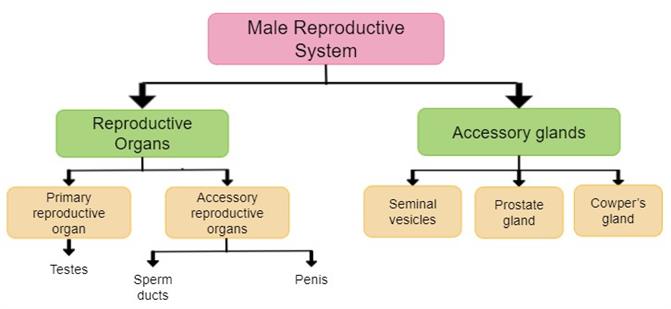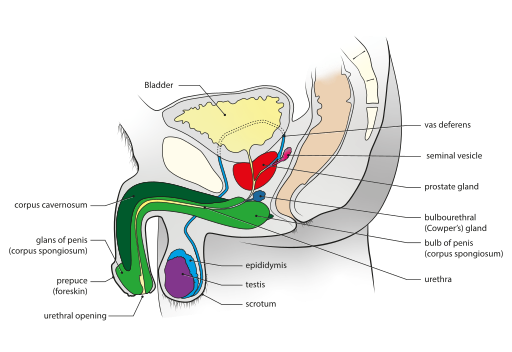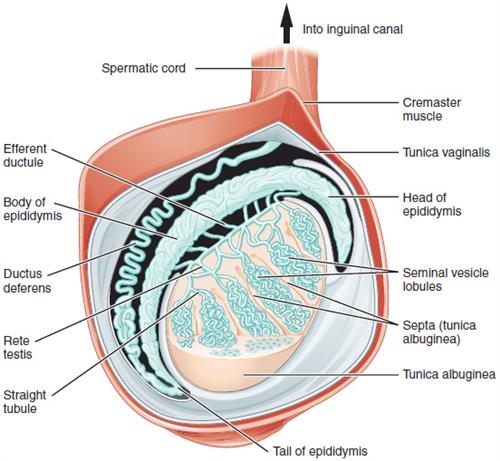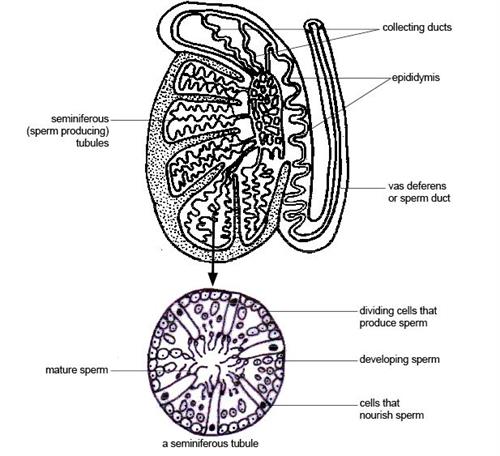PDF chapter test TRY NOW
Before we study the stages of sexual reproduction in humans, let us first look at the male and the female reproductive organs in humans. Human beings are unisexual and have two separate sexes - male and female. Both the sexes (male and female) are morphologically different from each other.
It consists of parts that produce the germ cells and other portions that deliver the germ cells to the site of fertilisation. The reproductive system thus comprises of two different parts:
1. Primary reproductive sex organs - It includes the gamete producing gonads, i.e., the testes (in male) and the ovaries (in female).
2. Secondary or accessory reproductive sex organs
Accessory sex organs:
The accessory sex organs include the glands, passages and other such associated structures. The accessory sex organs include:
- Vas deferens, epididymis, seminal vesicles, prostate gland, Cowper's gland (bulbourethral gland) and penis in the male.
- Fallopian tubes, uterus, cervix and vagina in the female.

Schematic flow chart of male reproductive organs and glands
The secondary sex organs are involved in:
- Process of ovulation
- Fertilisation process where male and female gametes fuse
- Division of the fertilised egg until the formation of an embryo
- Pregnancy
- Development of the foetus
- Childbirth
Let us now focus on the primary reproductive organs, their cells and their role in reproduction in males and females.
Male Reproductive System:
The male reproductive system consists of portions that produce the germ cells and other portions that deliver the germ cells to the site of fertilisation. The male reproductive system consists of :
1. A pair of testes that produces germ cells or sperms.
2. A pair of sperm ducts called Vas deferens or Ductus deferens that carries the sperms. The sperms formed in the testes are delivered through the vas deferens, which joins with the urethra from the urinary bladder. The urethra thus forms a common passage for both the sperms and urine.
3. Accessory glands that contribute to the seminal fluid. The seminal vesicles secrete a fluid into the ejaculatory duct. The fluid, along with the sperms, is called semen. The prostate gland also pours its secretion to the urethra. This also mixes with the semen. The secretions from seminal vesicles and the prostate gland provide nutrition and make the transport of sperms easier. The major constituents of semen include citrate, ascorbic acid, fructose, the hormone prostaglandin etc.
4. Penis that transfers sperms into the female.

Male reproductive system
Testes:
Testes (singular testis) are the reproductive glands of the male that are present in a thin-walled sac called the scrotum. Each of the testes is an oval-shaped organ. It has a length of about 4\ - 5 cm and a width of about 2 - 3 cm.
They lie outside the abdominal cavity in the scrotum as sperm formation requires a lower temperature (2 - 2.5°C lower than the normal body temperature). This temperature is conducive to the formation and maturation of sperms. The scrotal sacs hang loose when it is hot, and when it is cold, the scrotal sacs' skin contracts, keeping them in close touch with the body.
Now we will take a look at the cells that are present in a testis.
Each of the testes is covered by three layers:
1. Tunica vaginalis - The outer covering of the testis
2. Tunica albuginea - Fibrous tissue that covers the testes
3. Tunica vasculosa - Consists of a network of capillaries
Many septa from the tunica albuginea layer divide the testes into pyramidal lobules. Each testis has about 250 compartments of pyramidal lobules. The highly coiled seminiferous tubules, Sertoli cells, and the Leydig cells (interstitial cells) are present in each lobule.

Longitudinal section of testes
The process of spermatogenesis (sperm formation) occurs in the seminiferous tubules. The Sertoli cells are the supporting or nursing cells that provide nutrients to the developing sperms. The cells also secrete another protein called the inhibin that suppresses the FSH synthesis.
The Leydig cells have a polyhedral shape and lie between the seminiferous tubules. The Leydig cells secrete the hormone testosterone. Testosterone is the hormone that initiates the process of spermatogenesis.

Anatomy and physiology of a seminiferous tubule
Reference:
https://commons.wikimedia.org/wiki/File:Male_genital_system_-_Sagittal_view.svg
https://commons.wikimedia.org/wiki/File:Figure_28_01_03.JPG
https://upload.wikimedia.org/wikipedia/commons/8/82/Anatomy_and_physiology_of_animals_The_testis_%26_a_magnified_seminferous_tubule.jpg
https://www.youtube.com/watch?v=k60M1h-DKVY&t=113s
